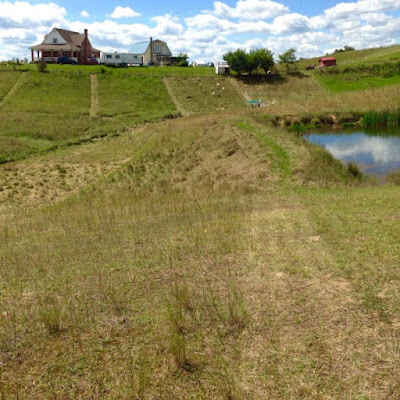This is what Rotational Grazing looks like on our farm.
These photos are from a few years ago, but I have had a few questions about what it is we do, so I’m sharing them again.
The first photo is the one that will be discussed…
The area to the far left has not been grazed for over 12 months. Letting the land rest is critical. The length of time to let it rest varies depending on your situation, but 45 days is typically the minimum. We shoot for 90-180 days in some places, but others will get 12 months when needed.
Just left of center are the paddocks ready to be grazed.
In the center is the paddock with our sheep.
Just right of center is the paddock with our turkeys... following our sheep. We often try to have poultry follow the sheep when possible. It was turkeys here, but it may be broiler chickens in mobile pens (“chicken tractors”) or layer chickens in a mobile coop (“egg mobile”).
Above the pond and to the left of the pond is where the sheep and turkeys have just grazed.
Wrapping around the bottom of the pond at the bottom of the photo, and then wrapping around to the right of the pond... this is where the animals have grazed, but this is one of the spots on the farm where I occasionally mow following grazing to break up the clumping Broomsedge to allow the cool-season plants room and light to grow… this becomes less frequent as the years go by.
The area above and to the right of the pond... this bright green area... this is where the beauty of Rotational Grazing shows itself off. This lush pasture keeps improving with each grazing cycle. There is richer soil, more soil life, more plant diversity, less runoff, more resilience to poor weather.
Very simply put, by mimicking herds of wandering herbivores (ie Bison, Wildebeests, etc.), we can regenerate our land.


No comments:
Post a Comment